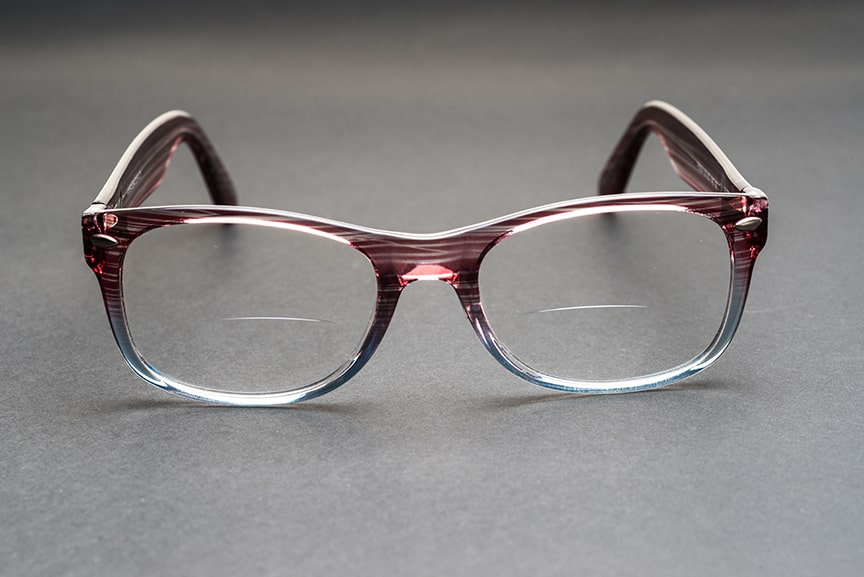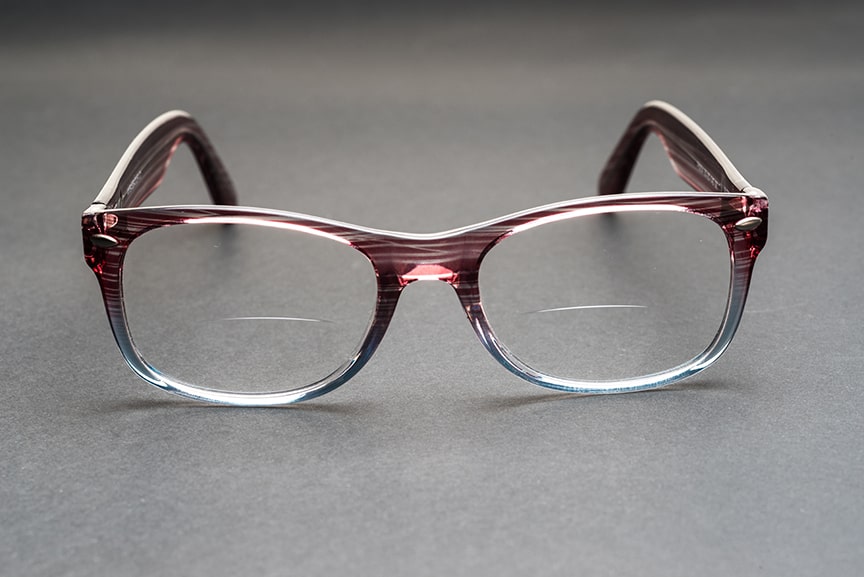Bifocal vs Progressive: How to Decide What’s Best
In this blog post you will learn all there is to know about bifocal and progressive lenses so you can feel more confident in making decision about which type of lenses is best for you!


Presbyopia - The reason for Bifocal/Progressive Lenses
Presbyopia is a term that many people are unfamiliar with yet it is rather common, especially among the elderly. When the lens of the eye ages and loses its flexibility, presbyopia develops. The eye’s natural capacity to focus on things at various distances is eventually inhibited by this loss of pliability, resulting in blurriness and general difficulty seeing. This is what leads to many people being bi bifocals or progressive lenses.
What are Bifocals?
Bifocal glasses are glasses that contain two different lens powers in one or both lenses. This is so the wearer can see well both up close and from distance. Bifocals can be in contacts as well which is known as multifocal. Bifocal/multifocal contact lenses are a great option for someone who can’t see well up close but doesn’t want to wear glasses. You can even get sunglasses with bifocals & bifocal transition lenses!
Types of Bifocal Lenses
Bifocal lenses can come in several different types, which include:
Flat-top: On the side of a flat-top bifocal is a little piece shaped like a half moon or the letter “D.” It’s on the inside of the nose, near the bottom of the lens. A patient can pick between a 25 mm segment and a 28 mm segment, depending on their preferences. A noticeable line in the lens may be seen at the top of the segment.
Round Seg: A round bifocal is a lens with a 22 or 24 mm round section at the bottom. This bifocal was created to make it easier for the wearer to access the segment’s reading area. Round portions are no longer as popular as they once were.
Blended: Prior to the development of no-line bifocals, blended bifocals were common. They usually consist of a spherical section with edges that blend in with the rest of the lens. While it is plainly obvious to a skilled optician, it is significantly less visible to the rest of the world than a flat-top bifocal.
Executive: An executive bifocal is a line bifocal in which the top half (distance) and bottom half (near) of the lens are totally split by a visible lens that reaches all the way across the lens. These were popular with persons who did a lot of office and desk work since they
What are Progressive lenses?
Progressive lenses are essentially “no line bifocals”. Instead of having a demarcated bifocal, the lens power will gradually shift. This will allow the wearer to see at all distances. Progressive contact lenses are also an option for those who don’t want to wear glasses. There are no lens lines, and people won’t notice a bifocal line in your glasses.
Getting Used to Progressive Lenses
It may take some time to get used to your progressive lenses. Right after switching, some progressive lens wearers may notice headaches, blurry vision, and difficulty balancing. This can be frustrating at first, but it is important for you to get used to your new lenses. Here are some techniques:
When reading, move the book, not your eyes or head.
Hold the item you are looking at about 18 inches away from you, and make sure you are looking through the bottom of your lenses.
If your lenses are still bothering you after a few weeks, talk to your eye doctor. A new prescription may be necessary.
Don’t switch between your new pair of glasses and your old one. It’s important to acclimate your eyes to the new lenses.
It is important to be patient when switching to progressive lenses. It can take anywhere from a few days to a few weeks to get used to them. However, they are a great option if you aren’t a fan of bifocals.
Bifocal vs Progressive
Between bifocals and progressive lenses, there are three major differences. Progressive lenses provide clear vision at all distances, whereas bifocals only correct eyesight for two distinct fields of vision. Bifocals have a typical design with lines between the fields of vision, whereas progressive lenses have no visible lines and allow seamless lens transitions, which is a selling point for many. Progressive lenses are more expensive than simple bifocals from a financial standpoint. Depending on the sort of progressive lenses you select, the cost may not be significantly more.
What’s the Right Lens For Me?
Presbyopia is treated with progressive and bifocal lenses, which give pleasant vision for people who have several prescriptions. Within the lens, progressive lenses easily change between near and far prescriptions. In bifocal lenses, however, a distinct line separates near and far vision. When deciding which sort of lens is appropriate for you, think about your lifestyle and personal preferences.

